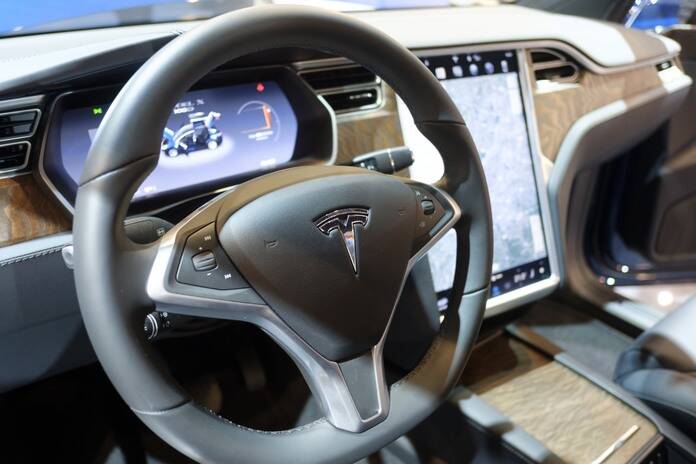Tesla’s (NASDAQ:TSLA) third-quarter net income took a hit compared to the previous year due to price reductions that boosted sales but squeezed the automaker’s profit margins.
The electric vehicle, solar panel, and battery manufacturer, headquartered in Austin, Texas, reported a net income of $1.85 billion for the July-September quarter, marking a 44% decrease from the same period a year earlier. Earnings per share fell from 95 cents to 53 cents.
Excluding stock-based compensation, Tesla’s adjusted net income dropped to $2.32 billion, or 66 cents per share. This figure fell short of analysts’ consensus estimate of 73 cents per share, as reported by FactSet.
While total revenue increased by 9% to $23.35 billion, it fell short of analysts’ expectations, who had forecasted $24.19 billion.
Earlier in the month, Tesla announced the sale of 435,059 vehicles during the July-September period, reflecting a 27% growth compared to the same period last year. However, this figure came in below the 461,000 vehicles analysts had anticipated, according to FactSet Research. Tesla attributed this to planned factory upgrades.
Throughout the year, Tesla has consistently reduced prices to attract buyers in the competitive electric vehicle market, where more automakers are transitioning away from gasoline-powered vehicles. These discounts ranged from $4,400 on popular Tesla models to $20,000 on its high-end offerings.
The continuous price cuts have impacted Tesla’s operating margin, a measure of how effectively sales convert to pre-tax profits, which dropped to 7.6% in the third quarter, down significantly from 17.2% a year earlier. This metric also declined in the first two quarters of the year.
In addition to lower electric vehicle prices, increased expenses associated with Tesla’s Cybertruck and the development of an AI-trained “humanoid robot” have also contributed to the decline in the company’s profitability.
Tesla’s sales for the third quarter were primarily driven by its Model 3 and Model Y vehicles, which became even more appealing with the price reductions. Sales of the older Model S and Model X models decreased by 14% year-over-year to 15,985 units.
Looking forward, Tesla reiterated its goal of manufacturing approximately 1.8 million vehicles this year and confirmed that the highly anticipated Cybertruck electric pickup remains on track for deliveries this year.
During a conference call with analysts, CEO Elon Musk disclosed the company’s plans to produce around a quarter-million Cybertrucks annually. However, he clarified that he doesn’t expect Tesla to reach that production level for the futuristic-looking vehicle in the coming year but rather “probably” by 2025.
Musk stresses that although this is potentially our most exceptional product to date, it will necessitate an extensive effort to achieve high-volume production and financial sustainability at an affordable price for the public.
Following the earnings report’s release, Tesla’s shares closed 4.8% lower on Thursday but increased by 2% in after-hours trading.
Featured Image: Unsplash















